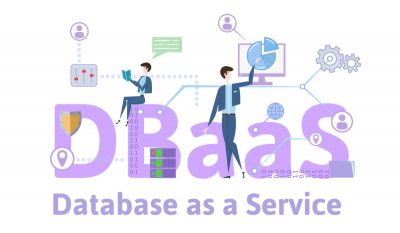Highlights –
- Utilizing data analytics to achieve these efficiency gains is not a “nice-to-have” but rather a “must-have,” especially when compared to a more traditional merchandising strategy’s “one-size-fits-all” approach.
- The best ways retailers can cooperate with their merchandising teams to reduce the most frequently cited issues are to prioritize data sharing, strategy alignment, and specifications for consistent interactions and reporting.
The foundation of retail operations has long been thought to be merchandising. The needs of completely digital storefronts, skincare, convenience stores, and your neighborhood coffee shop are just a few examples of the wide range of features included in merchandising in practice even if visual merchandising remains at its best core.
Speed, efficiency, and transparency are just a few of the characteristics that define the client and customer demands of the digital age as a whole, and COVID-19’s acceleration of tech-based services (like VR) also increased these trends.
Traditional merchandising is currently struggling to meet the “complicated” demands of the elusive modern consumer. A focus on legacy merchandising consulting firms, longer-term, inflexible contracts, and a sizable emphasis on traditional client relationship building is increasingly proving ineffective in responding to quickly emerging modern needs that require more efficient, data-centered operations.
Pain points in the merchandising process
A company named RETHINK Retail surveyed across the globe to understand the needs, trends, and issues faced by retailers in 2022.
Some findings are rather obvious, such as the finding that 75% of respondents use third-party merchandisers, but reporting on other results, like pain areas, proved helpful. When asked what the main merchandising issues faced by decision-makers were, ‘Preventing Out-of-Stocks’ came out on top with nearly 80% of responses. This may not come as a surprise considering COVID-19, a disaster that fatally aggravated already serious supply-chain issues.
Other challenges were maintaining the needed staff levels due to continuous labor shortage, shopper engagement, lack of real-time data, quality of merchandising and execution, phantom inventory, and more.
Utilizing data analytics to achieve these efficiency gains is not a “nice-to-have” but rather a “must-have,” especially when compared to a more traditional merchandising strategy’s “one-size-fits-all” approach to (for example) product shipments where a less traditional data-centric approach can help to identify specific needs within a supply-constrained environment, given that the average retailer only utilizes about 60% to 65% of their labor capacity.
Mapping changes with data – strategies for merchandising
First, you need to identify needs. For brick-and-mortar outlets, visual merchandising tactics remain crucial monitoring points, calling on foot-trafficked stores to utilize trends such as experiential merchandising, greater informational signage, and sustainability.
Digital merchandising (“the selection and presentation of products and content to make optimal use of screen real estate”) may not profit from experiential merchandising but web page-specific methods like providing downloadable circulars and coupons on your website.
Yet, overlapping patterns will always exist for every store; mobile technology use has grown steadily for over a decade. All retailers must continue to engage substantially in their data collecting, analysis, and application.
In fact, thorough data collection and analysis will continue to be essential for any retailer to comprehend their business and, more importantly, what their customers want in a world where consumers are less innately loyal.
By monitoring average sales, retailers may identify storefronts by volume, data that helps them to determine how many shipments of what should go where rather than the usual ‘one-size-fits-all’ strategy. This data has perhaps never been more critical than in the previous three years.
The best ways for retailers to cooperate with their merchandising teams to reduce the most frequently cited issues are to prioritize 1) data sharing, 2) strategy alignment (especially before project launch), and 3) specifications for consistent interactions and reporting.
In other words, regular and transparent communication is a crucial practice for retailers to adopt. Before a project starts, emphasize with their retail teams (internal or external).
Improving third-party outcomes
When picking a provider, merchants must assess if their needs correspond with the provider’s own service priorities and best practices. When that alignment is established up front, retailers can be more confident that efficiency (e.g., how quickly a provider can complete a reset) will be maximized, which is the key indicator of whether their third-party team is successful.
Making strategic investments
During the RETHINK survey, leaders were asked what investments they planned to make in the coming year. ‘Inventory Control and amp; Store Audit’ won with nearly 80%, followed by Shopper Marketing (57%) and Sampling/Product Demonstration (50%), carrying the second and third spots, respectively.
Because post-COVID-19 issues are tied to supply chain inefficiencies, retailers want to invest as much as possible upfront as part of long-term planning.
Wrapping up
Retailers can identify the best merchandising teams by sharing data, aligning strategies, and communicating clearly.
Choosing a modern, flexible, efficient, and quick provider who can meet their needs upfront is recommended.
Retailers should go for a stout data analytics team, whether choosing a third-party provider or building an internal team. Data and adaptation should be at the core of your merchandising team to meet complex needs like optimizing shipping routes, capturing the fickle modern consumer, or finding localized supply chains.














